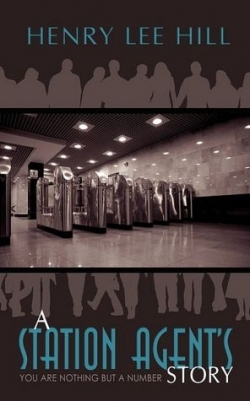A Station Agent's Story
You Are Nothing But a Number
Although promoted on its back cover as an autobiography, Henry Lee Hill’s A Station Agent’s Story is more of a ranting memoir. Hill aims to expose the New York City Metropolitan Transportation Authority (MTA) for treating its employees as “nothing but a number” and unreasonably insisting that “the customer is always right.” Twenty years in the writing, this is a book with raw potential but too many flaws to forecast any great success in the bookstore.
The book is short on biographical details and it contains numerous typographical errors and grammatical glitches. There are also inconsistencies in style—some passages are competently written, but others lack punctuation and just ramble. Nevertheless, Hill’s book has a lot to recommend it as a work written “in defence of all nonmanagement employees” at the MTA. His statement that “you have to walk in our shoes before you realize how bad our feet hurt,” may be cliché, but it’s meaningful.
The cover art depicts the interior of a metro station superimposed on the unidentifiable, gray figures of the patrons that Hill describes at length in his book. And while the prose isn’t always as clear and concise as it should be, the author’s imagery of both the people who ride the transit and the employees who serve them is frequently memorable. There are kids who—sometimes fatally—surf the subway trains. Hill contends with fare-beaters rushing the turnstiles; foul-mouthed, abusive customers of all ages, genders, and race; and even drug-eating rats “as big as cats.” There are crack addicts, sex perverts, suicides, cops on the take, and “beakies” who spy on their fellow employees.
Hill describes the gripes he had with his union and rants on about the MTA and its shortcomings. He tells of legal issues he had with the Authority from his first day on the job. No matter how shocking some of the material is, the author claims he has not exaggerated.
Hill writes that being a station agent is “like working in a can of mixed nuts.” He says that—after turning in his MTA badge at age sixty-two—he now knows “how a prisoner feels when getting released after serving a 24 year punishment.”
Reviewed by
M. Wayne Cunningham
Disclosure: This article is not an endorsement, but a review. The publisher of this book provided free copies of the book and paid a small fee to have their book reviewed by a professional reviewer. Foreword Reviews and Clarion Reviews make no guarantee that the publisher will receive a positive review. Foreword Magazine, Inc. is disclosing this in accordance with the Federal Trade Commission’s 16 CFR, Part 255.


